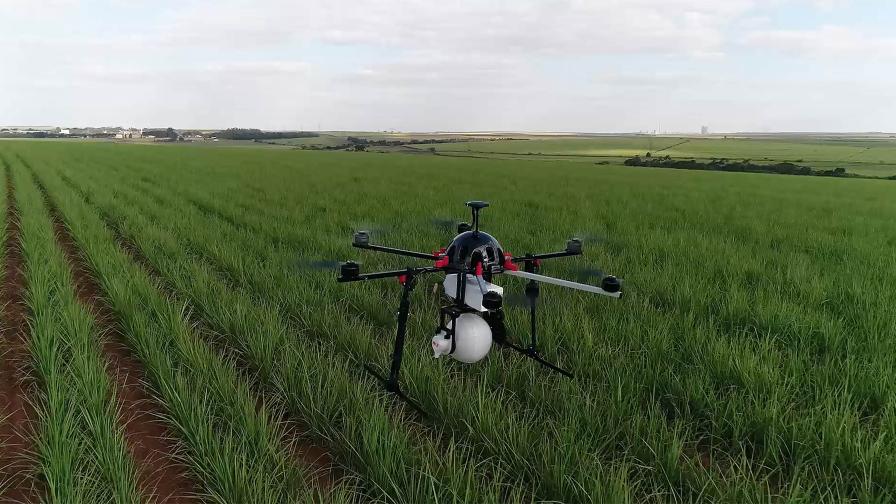State of the Industry 2012: Profits, Volumes Expected to Rise in 2012

After several years of concern over a sluggish value chain, grower demand is creating an uptick in volumes and value at the manufacturing and distribution levels. More than 86% of crop protection manufacturers say revenues will be the same or higher than last year’s record year, according to the Farm Chemical International 2012 State of the Industry Survey. Almost 20% of respondents expect double-digit growth in revenues this year. Just 13% of manufacturers expect revenues to decline.
Anticipated volumes tell a similar story; 88% of manufacturers say output will be the same or higher than last year. More than 70% of manufacturers expect increased volumes compared to last year, and 21% expect at least 11% volume growth over 2011.
Producer optimism stems from a strong first quarter; 76% of manufacturers met or exceeded their Q1 budget goals, and one-third of respondents increased their annual budget to capitalize on this year’s increased liquidity in the value chain. Almost 60% of respondents say herbicides are contributing to their optimism.
About half report that demand for fungicides and insecticides are lifting sales, and about one-quarter of manufacturers are seeing a boost in fertilizers, seed treatments and plant growth regulators.
A strong first quarter is a harbinger for the rest of the year; 31% of distributors say they make most of their purchasing decisions in the first quarter. More than 36% say they make the majority of their purchasing decisions in the fourth quarter. Almost 19% make purchasing decisions between April and June, and 14% make most of their purchasing decisions from July to September. These purchasing cycles are crucial windows for manufacturers as they manage their facilities for production highs and lows.
Reinforcing this early reading, distributors say more product is moving off their shelves than in recent years: 85% of distributors say inventory in the past 12 months has turned over at least as much or more than in recent years. Almost half of distributors are experiencing double-digit growth in turnover. Just 15% of distributors say turnover is less than in recent years.
The Cost of Business
Despite a great deal of optimism about the rest of 2012 and relief that the pipeline is more fluid than in years past, manufacturers report the need to manage costs closely to optimize profits. Low product prices are still a concern; 48% of manufacturers say low product prices are one of their biggest challenges in the current economic environment.
The biggest obstacle to profits, however, is the high cost of raw materials, according to 53% of producers, followed by product prices, tariffs and government policy (29%) and registration costs (28%). Labor is on the rise, too. Two-thirds of manufacturers say labor costs are rising, although the vast majority is experiencing labor cost increases of less than 25%.
Considering better liquidity in the value chain and a farmers’ heightened understanding of using pesticides to optimize yields, suppressed product prices appear to be a result of heightened competition among technical-grade formulators. The glut has turned many actives into commodities that formulators must convert to usable products at the farm level. Formulators and producers that optimize their chemistries, meet the demand for combination products and package products for sale at the retail level report less price instability.
This trend reinforces a growing sophistication among farmers, who increasingly seek better technologies to optimize yields. It also creates a clear path for companies that want to differentiate themselves from the most basic producers. About 38% of manufacturers say competition is the biggest obstacle to operations, more than double than farmer knowledge and education (15%) and access to markets and distribution channels (14%).
More than half of producers say multinational companies are their primary competition, reinforcing the demand for better formulation technology, pre-mixed products packaged for retail and more prolific brands. Almost 38% of manufacturers say importers and exporters are their main competitors.
Interestingly, at the distribution end, competition with multinationals might not be as fierce as perceived; 53% of distributors say they source almost none of the products they sell from multinational companies. Almost 30% of distributors say they stock their shelves with 25% to 50% of products from multinationals, and about 20% source more than 75% or more of their products from multinationals. That is a vast disparity from current data that estimates that products from multinational companies monopolize the lion’s share of the global market. The reality is that the world is getting smaller and key markets are more accessible by an array of producers. Distributors and marketing companies reportedly source 85% of their products globally, and they are increasingly price-conscious as they attempt to offer a better value proposition to their customers.
The sourcing game is also a stimulus to more registrations for in-country marketing companies and distributors; 45% of distributors are the official registration holder for between 21 and 100+ products. This reality expresses the need for in-country partnerships. Foreign companies often need local businesses to register products and gain access to retail stores, and this statistic shows there is formidable in-country expertise that can help grow portfolios mutually. About 18% of distributors do not register products. About 37% hold registrations for fewer than 20 products, illustrating some expertise and perhaps a latent desire to meet new trading partners to remain competition in their respective markets.
Moreover, 68% of distributors say they plan to add new product lines to their portfolio this year. One-quarter of distributors say they plan to open new packaging facilities and retail centers to help expand their businesses.
Editor’s Note and Methodology: Farm Chemicals International’s annual State of the Industry Survey and Special Report offers readers a biographical snapshot of industry health and the sentiment of the companies that operate in it. For the second year, separate surveys were completed by producers and distributors, allowing more insightful data to be compiled. The surveys are intended to give manufacturers, distributors and other members of the value chain insights into production, purchasing trends and other factors that influence the crop input industry at the global, national, local, retail and farm levels.
The survey was designed by FCI editors and broadcast to our email subscriber base, and a link was also posted on our website and Facebook page. Three email reminders were sent out during the six weeks the survey was open in May and June, and an incentive was offered to win an iPad.
The survey was taken by more than 200 respondents in more than 40 countries, giving the survey a margin of error of ±6.16% with a 95% confidence level.






